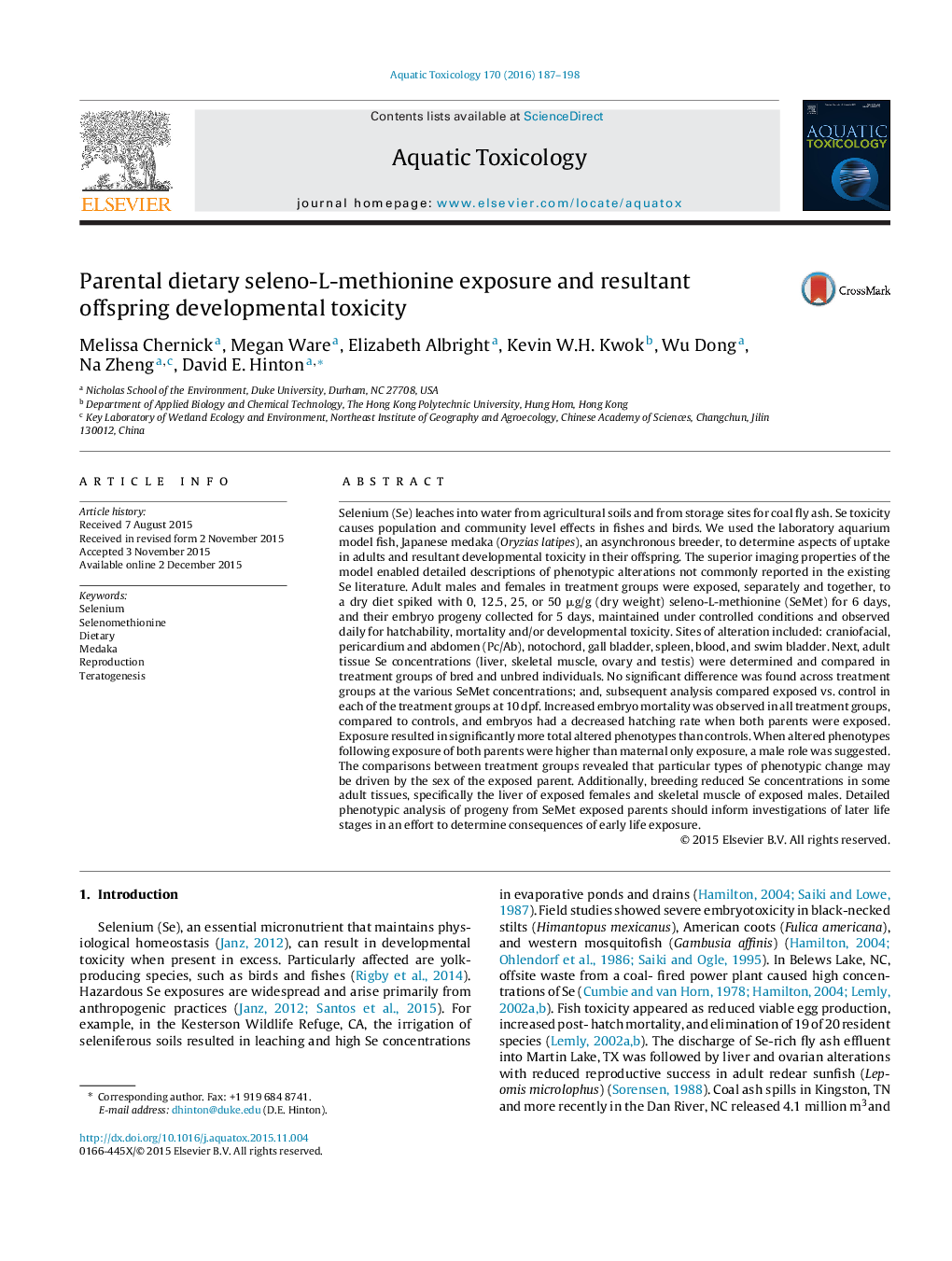| کد مقاله | کد نشریه | سال انتشار | مقاله انگلیسی | نسخه تمام متن |
|---|---|---|---|---|
| 4528978 | 1625935 | 2016 | 12 صفحه PDF | دانلود رایگان |

• F1 generation of SeMet-exposed medaka mother, father, and breeding pairs studied.
• Brief exposure of asynchronously breeding parents caused altered offspring.
• When most effects were seen after both parents were exposed, a male role suggested.
• Specific phenotypic categories appeared influenced by sex of exposed parent.
• Breeding reduced Se in some adult tissues, specifically liver and skeletal muscle.
Selenium (Se) leaches into water from agricultural soils and from storage sites for coal fly ash. Se toxicity causes population and community level effects in fishes and birds. We used the laboratory aquarium model fish, Japanese medaka (Oryzias latipes), an asynchronous breeder, to determine aspects of uptake in adults and resultant developmental toxicity in their offspring. The superior imaging properties of the model enabled detailed descriptions of phenotypic alterations not commonly reported in the existing Se literature. Adult males and females in treatment groups were exposed, separately and together, to a dry diet spiked with 0, 12.5, 25, or 50 μg/g (dry weight) seleno-L-methionine (SeMet) for 6 days, and their embryo progeny collected for 5 days, maintained under controlled conditions and observed daily for hatchability, mortality and/or developmental toxicity. Sites of alteration included: craniofacial, pericardium and abdomen (Pc/Ab), notochord, gall bladder, spleen, blood, and swim bladder. Next, adult tissue Se concentrations (liver, skeletal muscle, ovary and testis) were determined and compared in treatment groups of bred and unbred individuals. No significant difference was found across treatment groups at the various SeMet concentrations; and, subsequent analysis compared exposed vs. control in each of the treatment groups at 10 dpf. Increased embryo mortality was observed in all treatment groups, compared to controls, and embryos had a decreased hatching rate when both parents were exposed. Exposure resulted in significantly more total altered phenotypes than controls. When altered phenotypes following exposure of both parents were higher than maternal only exposure, a male role was suggested. The comparisons between treatment groups revealed that particular types of phenotypic change may be driven by the sex of the exposed parent. Additionally, breeding reduced Se concentrations in some adult tissues, specifically the liver of exposed females and skeletal muscle of exposed males. Detailed phenotypic analysis of progeny from SeMet exposed parents should inform investigations of later life stages in an effort to determine consequences of early life exposure.
Journal: Aquatic Toxicology - Volume 170, January 2016, Pages 187–198